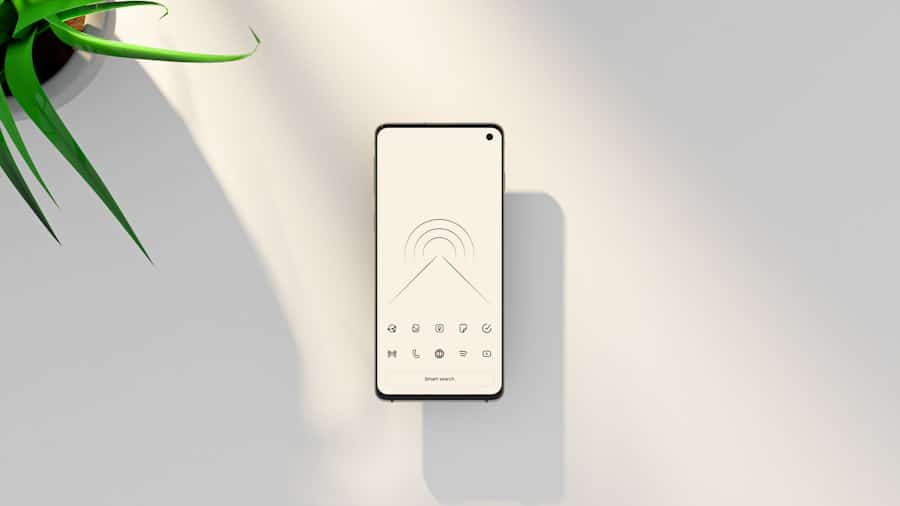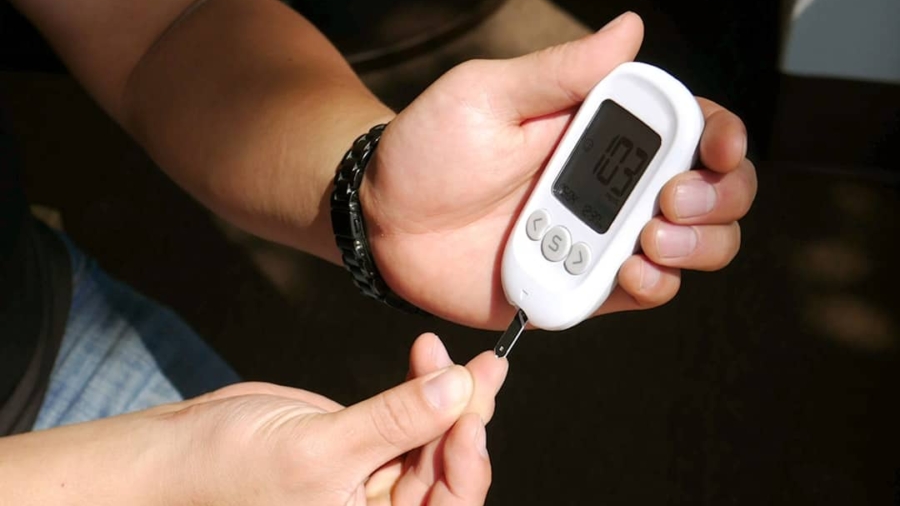Biometric wearables have emerged as a transformative technology in the realm of health and fitness, revolutionizing how individuals monitor their physical activity and overall well-being.
This data can encompass heart rate, body temperature, sleep patterns, and even blood oxygen levels.
The integration of biometric technology into wearable devices has made it possible for users to gain real-time insights into their health metrics, enabling them to make informed decisions about their fitness routines and lifestyle choices. The rise of biometric wearables can be attributed to several factors, including advancements in sensor technology, increased consumer awareness of health issues, and a growing emphasis on preventive healthcare. As people become more health-conscious, the demand for tools that facilitate self-monitoring and personal accountability has surged.
Biometric wearables not only cater to this demand but also provide a platform for users to set goals, track progress, and receive feedback on their performance. This shift towards data-driven fitness is reshaping the landscape of personal health management, making it more accessible and engaging for a broader audience.
Key Takeaways
- Biometric wearables are wearable devices that use biometric technology to track and monitor various aspects of health and fitness.
- Biometric wearables offer benefits such as accurate tracking of physical activity, heart rate, sleep patterns, and calorie expenditure, providing users with valuable insights into their fitness levels and overall health.
- These wearables improve accuracy in fitness tracking by using advanced sensors and algorithms to capture and analyze data, resulting in more precise measurements and feedback.
- Biometric wearables play a crucial role in monitoring health and wellness by providing real-time data on vital signs, stress levels, and overall physical well-being, empowering users to make informed decisions about their health.
- The integration of biometric wearables with fitness apps and programs allows for seamless data sharing, personalized workout recommendations, and goal tracking, enhancing the overall fitness experience for users.
The Benefits of Biometric Wearables for Fitness Tracking
One of the most significant advantages of biometric wearables is their ability to provide continuous monitoring of physical activity. Unlike traditional fitness trackers that may require manual input or periodic checks, biometric devices operate autonomously, collecting data throughout the day. This continuous monitoring allows users to gain a comprehensive understanding of their activity levels, including steps taken, calories burned, and time spent in various heart rate zones.
Such detailed insights empower individuals to adjust their exercise routines in real-time, ensuring they remain aligned with their fitness goals. Moreover, biometric wearables often come equipped with features that promote motivation and accountability. Many devices include goal-setting functionalities that allow users to establish specific targets related to their fitness journey.
For instance, a user might set a goal to walk 10,000 steps daily or to achieve a certain number of active minutes each week. The wearable can then provide reminders and notifications to encourage adherence to these goals. Additionally, many devices incorporate social features that enable users to connect with friends or join challenges, fostering a sense of community and competition that can further enhance motivation.
How Biometric Wearables Improve Accuracy in Fitness Tracking

The accuracy of fitness tracking is paramount for users who rely on data to inform their exercise regimens. Biometric wearables have made significant strides in this area by employing sophisticated sensors and algorithms that enhance the precision of the data collected. For example, optical heart rate sensors use light to measure blood flow through the skin, providing real-time heart rate readings that are often more accurate than those obtained from traditional chest straps.
This level of accuracy is crucial for individuals who engage in high-intensity workouts or those who need to monitor their heart rate for medical reasons. In addition to heart rate monitoring, biometric wearables utilize accelerometers and gyroscopes to track movement patterns with remarkable precision. These sensors can differentiate between various types of physical activities—such as running, cycling, or swimming—allowing for more tailored feedback based on the specific demands of each activity.
Furthermore, advancements in machine learning algorithms enable these devices to learn from user behavior over time, refining their tracking capabilities and providing increasingly personalized insights. This combination of advanced technology and data analytics ensures that users receive reliable information that can significantly enhance their fitness outcomes.
The Role of Biometric Wearables in Monitoring Health and Wellness
Beyond fitness tracking, biometric wearables play a crucial role in monitoring overall health and wellness. Many devices are equipped with features that allow users to track vital signs such as blood pressure, blood oxygen saturation (SpO2), and even electrocardiogram (ECG) readings. This capability is particularly beneficial for individuals with chronic health conditions or those at risk for cardiovascular diseases.
By providing continuous monitoring of these vital metrics, biometric wearables can alert users to potential health issues before they escalate into more serious problems. Additionally, biometric wearables often include sleep tracking functionalities that analyze sleep patterns and quality. Understanding sleep behavior is essential for overall health, as poor sleep can lead to a myriad of health issues including obesity, diabetes, and mental health disorders.
By monitoring sleep duration and quality, users can identify factors that may be affecting their rest and make necessary adjustments to improve their sleep hygiene. This holistic approach to health monitoring positions biometric wearables as invaluable tools for individuals seeking to enhance not only their physical fitness but also their overall well-being.
The Integration of Biometric Wearables with Fitness Apps and Programs
The synergy between biometric wearables and fitness applications has created a comprehensive ecosystem for health management. Many wearable devices are designed to seamlessly integrate with popular fitness apps, allowing users to sync their data effortlessly. This integration enables users to view their metrics in a centralized location, providing a more comprehensive overview of their progress over time.
For instance, a user might track their workouts on a fitness app while simultaneously monitoring their heart rate and calorie expenditure through their wearable device. Moreover, the integration of biometric wearables with fitness programs enhances the user experience by offering personalized training plans based on real-time data. Many apps utilize algorithms that analyze user data from wearables to create tailored workout regimens that align with individual goals and fitness levels.
This level of customization ensures that users are not only following generic workout plans but are instead engaging in exercises that are specifically designed for their unique needs. As a result, users are more likely to experience positive outcomes and remain committed to their fitness journeys.
The Future of Biometric Wearables in Fitness Tracking

As technology continues to evolve at an unprecedented pace, the future of biometric wearables in fitness tracking appears promising. Innovations such as artificial intelligence (AI) and machine learning are expected to play a pivotal role in enhancing the capabilities of these devices. For instance, future wearables may incorporate predictive analytics that can forecast potential health issues based on historical data trends.
This proactive approach could empower users to take preventive measures before health concerns arise. Additionally, advancements in materials science may lead to the development of more comfortable and versatile wearable designs. Future biometric devices could be integrated into everyday clothing or accessories, making them less obtrusive while still providing accurate data collection.
Furthermore, as the Internet of Things (IoT) continues to expand, biometric wearables may become interconnected with other smart devices in users’ homes or workplaces, creating a holistic health management system that monitors various aspects of well-being seamlessly.
Considerations for Choosing the Right Biometric Wearable
When selecting a biometric wearable, several factors should be taken into account to ensure it meets individual needs effectively. First and foremost is the type of metrics one wishes to track; different devices offer varying capabilities in terms of heart rate monitoring, sleep analysis, and activity tracking. For instance, athletes may prioritize devices with advanced performance metrics such as VO2 max or lactate threshold analysis, while casual users might focus on basic step counting and heart rate monitoring.
Many users prefer wearables that can easily sync with smartphones or other devices they already own. Compatibility with popular fitness apps can also enhance the user experience by providing additional features such as personalized training plans or social sharing options.
Additionally, battery life is an essential factor; some devices require frequent charging while others can last several days on a single charge. Ultimately, choosing the right biometric wearable involves assessing personal goals, lifestyle preferences, and technological compatibility.
Embracing Biometric Wearables for Optimal Fitness Tracking
The advent of biometric wearables has fundamentally changed how individuals approach fitness tracking and health monitoring. With their ability to provide real-time data on various physiological metrics, these devices empower users to take control of their health journeys like never before. As technology continues to advance, the potential for biometric wearables will only expand further, offering even more sophisticated tools for personal health management.
By embracing biometric wearables as part of a comprehensive fitness strategy, individuals can gain valuable insights into their physical activity levels and overall well-being. Whether one is an elite athlete or someone simply looking to improve their daily activity levels, these devices offer an unprecedented level of support and motivation. As we move forward into an era where health data becomes increasingly integral to our lives, the role of biometric wearables will undoubtedly continue to grow in importance.
In the realm of fitness tracking, biometric wearables have become indispensable tools for individuals seeking to monitor their health and performance. These devices offer real-time data on various physiological metrics, enhancing the ability to tailor workouts and track progress. For those interested in expanding their tech-savvy approach to fitness, exploring the capabilities of smartwatches can be particularly beneficial. An article that complements the discussion on biometric wearables is Which Smartwatches Allow You to View Pictures on Them?. This piece delves into the multifunctionality of smartwatches, highlighting their potential to integrate seamlessly with fitness tracking by offering additional features such as viewing pictures, which can enhance user experience and engagement.
FAQs
What are biometric wearables?
Biometric wearables are devices that are worn on the body and are capable of measuring various physiological parameters such as heart rate, blood pressure, and body temperature.
How do biometric wearables track fitness?
Biometric wearables track fitness by continuously monitoring the user’s physiological parameters during physical activity, providing real-time data on their performance and progress.
What are the benefits of using biometric wearables for fitness tracking?
The benefits of using biometric wearables for fitness tracking include accurate and personalized data, motivation to achieve fitness goals, and the ability to monitor overall health and wellness.
What types of biometric wearables are available for fitness tracking?
There are various types of biometric wearables available for fitness tracking, including smartwatches, fitness bands, and chest straps, each with different features and capabilities.
How do biometric wearables improve the accuracy of fitness tracking?
Biometric wearables improve the accuracy of fitness tracking by directly measuring physiological parameters, providing real-time data, and eliminating the need for manual input or estimation.
Are biometric wearables essential for fitness tracking?
Biometric wearables are considered essential for fitness tracking due to their ability to provide accurate and personalized data, monitor overall health, and motivate users to achieve their fitness goals.

